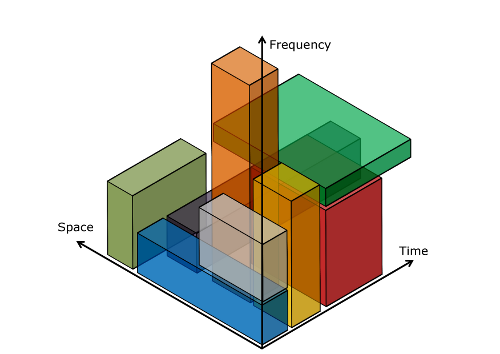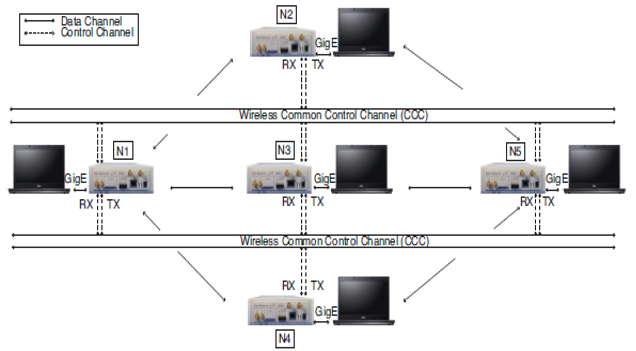Dynamic Spectrum Access (DSA) Systems
DSA News
-
Call for Participation to Telecommunication Industries
Value Proposition: ANDRO enables future growth markets in edge computing and communications today, to give early adopters a first mover market advantage and gain market dominance as others follow. ANDRO’s XSAS for Tier 1-3 Telcos/Mobile Network Services, Cablecos and Satellite Companies, Cloud Service Providers, Spectrum Access System (SAS), and Spectrum as a Service (SaaS) Platform Providers Download XSAS Call for Participation (pdf) ANDRO Computational Solutions, LLC is leading an initiative to roll out a new, enhanced Spectrum Access System (XSASTM) platform that will revolutionize the wireless communications and networking industry globally. XSASTM exploits the power and capabilities of ANDRO’s PrismLinkTM Radio and PrismStackTM embedded platforms. Our XSASTM provides significant returns on investment benefitting companies in eCommerce, content delivery, V2X, telehealth, remote education, wireless Internet of Things (IoT), and other market sectors. ANDRO seeks technology companies including strategic partners and investors who represent the interests of high-profile and large-scale Tier 1-3 telcos and network growth markets to participate in this unique program, including beta testers. Participation is fee structured, based on company size and problem sets. ANDRO will apply its XSASTM, PrismStackTM and PrismLinkTM solutions to solve customer problem sets, demonstrate solutions for use cases in a representative application environment, share technical insights, and provide...
DSA Policy
With the increasing popularity of cell phones and bandwidth-intensive applications, more-and-more wireless spectrum is being transferred to commercial operators to meet consumer demand. ANDRO’s DSA Policy Development program seeks to facilitate the adoption of DSA to ease the effects of recent spectrum auctions, specifically the AWS-3 transition. By developing a comprehensive set of DSA policies, tools, processes, and interfaces, ANDRO seeks to demonstrate that DSA-enabled systems can be safely governed to not interfere with systems in the same spectral frequency band. ANDRO’s policy development tool-chain was developed to work with existing and supported spectrum management tools using existing standards and interfaces to reduce integration risk and establish a feasible path to the certification of DSA. Systems impacted by spectrum transition efforts, like AWS-3, can utilize this end-to-end tool-chain on existing radios by operating a policy-based DSA engine application that governs the spectral behavior of the radio under the constraint defined by the policy. The mission is to establish a realistic path to the deployment of DSA by working with the current spectrum regulatory, management, and operations process rather than against it.
Transmission Hyperspace™
ANDRO developed and demonstrated innovative concepts for spectrum management that enabled the effective and efficient joint utilization of all orthogonal electromagnetic transmission resources, including, but not limited to, time, frequency, geographic space, power control, modulation/code, beam direction and polarization. This multi-
This research is aimed at developing approaches that consider the multi-

Transmission Cyberspace™
SBIR Phase I and II program for US Army CERDEC, develop a software upgrade kit for US Military handheld Software Defined Radios (SDR). Functionality to include automatic Dynamic Spectrum Access (DSA), intrusion detection and characterization, and pre-

Spectral Efficiency
Military communications networks are faced with congested spectrum in hostile environments. We are implementing new code-

X-Layer
Cognitive radio networks have emerged as a promising technology to improve the utilization efficiency of the available radio spectrum. Mainstream cognitive radio research focuses on opportunistic access to the licensed spectrum where the primary users of the band are known a priori and this knowledge can be utilized to detect if the band is occupied by the known signal pattern. However, in a highly dynamic military environment there may be multiple uncoordinated devices with unknown signal waveforms and activation statistics. In addition military environments may include hostile interference sources. Moreover, in cognitive radio networks with multi-
We have developed a new spread-
SBIR Phase I and II program for AFRL and with U Buffalo as subcontractor, develop a joint routing and dynamic spectrum access capability for SDR networks. Algorithm is ROSA (Routing and Spectrum Access) which optimizes routing based on multiple independent network parameters including interferences, node backlogs, RF whitespace, and primary user tolerance.


